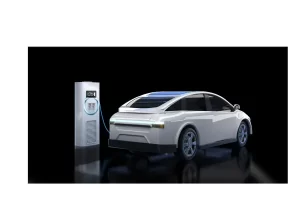Electric vehicles (EVs) are transforming the automotive landscape, offering an eco-friendly alternative to traditional gasoline-powered cars. However, like any vehicle, EVs can experience issues that require attention. Understanding these common problems, their causes, and how to fix them is essential for any EV owner. This guide provides an in-depth look at typical EV challenges and actionable solutions.
Battery Problems
Symptoms: Decreased Range and Battery Warning Lights
The battery is the lifeblood of an electric vehicle. When battery performance diminishes, you may notice a marked decrease in range—meaning you can’t drive as far on a single charge as you used to. This might manifest as your EV’s range indicator showing numbers significantly lower than usual. Additionally, you may see warning lights on your dashboard, such as a battery icon or alerts indicating battery management issues.
Causes: Aging, Temperature Effects, Improper Charging
Understanding what affects battery performance is crucial:
- Aging: Over time, all lithium-ion batteries experience a natural decline in capacity. This degradation is usually gradual, with most EV batteries losing about 20% of their capacity over eight to ten years, depending on usage and environmental conditions.
- Temperature Effects: Extreme temperatures can significantly impact battery performance. Cold weather can decrease the battery’s efficiency, resulting in a 20-40% reduction in range. Conversely, excessive heat can lead to thermal runaway, where the battery overheats, potentially causing damage.
- Improper Charging: Regularly using fast chargers can speed up battery wear. It’s best to charge your battery to around 80% for daily use and avoid letting it drop below 20%. Frequent deep discharges and constant topping off can lead to accelerated degradation.
Fixes: Battery Management Tips and When to Consult a Professional
To optimize battery health:
- Monitor Battery Health: Many modern EVs come with built-in battery management systems that display critical metrics. Regularly check these stats for insights into battery performance and health.
- Avoid Extreme States of Charge: Set your EV to charge between 20% and 80%. Some vehicles allow you to set charging limits via their apps or onboard systems, which is a great way to maintain battery health.
- Temperature Control: If you live in a region with extreme temperatures, consider utilizing your EV’s thermal management features. Parking in a garage during winter or a shaded area during summer can help regulate battery temperature.
- Consult a Professional: If you notice significant range loss or persistent warning lights, seek help from a certified technician who can perform comprehensive diagnostics and recommend necessary repairs or battery replacements.
Charging Issues
Symptoms: Inability to Charge and Slow Charging
Encountering issues while trying to charge your EV can be frustrating, especially if you depend on it for daily transportation. Symptoms may include the vehicle failing to connect to the charger or experiencing a significantly slower charging rate than usual, which can disrupt your driving plans.
Causes: Faulty Charging Station and Damaged Charging Cable
Charging issues can stem from several sources:
- Faulty Charging Station: If the charging station is malfunctioning or has intermittent power supply issues, your vehicle may not charge correctly. This can occur due to worn-out components or wiring problems at the station.
- Damaged Charging Cable: Over time, charging cables can sustain wear and tear, leading to frayed wires or bent connectors. Such damage can disrupt the connection, preventing proper charging.
Fixes: Checking Connections and Using Different Charging Stations
Here’s how to troubleshoot charging problems:
- Inspect the Charging Cable: Regularly examine the cable for any signs of damage. If you notice any fraying, kinks, or corrosion on the connectors, replace the cable immediately. Using a damaged cable can not only prevent charging but also pose a fire hazard.
- Test Different Charging Stations: If you experience charging issues, try plugging your vehicle into different stations. If it charges without problems elsewhere, the initial station may be the culprit.
- Check Settings: Ensure your vehicle’s charging settings are optimized for the type of charger you’re using. Some vehicles allow users to select charging modes, which can affect the charging speed and efficiency.
Braking System Concerns
Symptoms: Unusual Noises and Reduced Braking Efficiency
The braking system in an EV is critical for safety. If you hear unusual noises, such as grinding or squeaking, when applying the brakes, or if you notice a decrease in braking power, it’s essential to address these symptoms immediately.
Causes: Wear on Regenerative Braking Components
EVs utilize regenerative braking, which not only slows the vehicle but also recaptures energy to recharge the battery. Over time, components associated with this system can wear out, resulting in inefficient braking performance.
Fixes: Regular Inspections and Potential Replacement Parts
To maintain effective braking:
- Schedule Regular Inspections: Have your braking system checked regularly, especially if you experience unusual symptoms. This includes inspecting brake pads, rotors, and regenerative braking components for wear and tear.
- Replace Worn Parts: If inspections reveal worn components, replace them promptly. Use original equipment manufacturer (OEM) parts for compatibility and reliability. Regular maintenance can extend the lifespan of your braking system and improve safety.
Overheating
Symptoms: Warning Lights and Reduced Performance
Overheating can severely impact your EV’s performance and lead to potential damage. Common symptoms include warning lights indicating overheating, reduced acceleration, or unusual behavior from the vehicle’s systems.
Causes: Coolant System Failure and Battery Temperature Issues
Several factors can contribute to overheating:
- Coolant System Failure: EVs rely on liquid cooling systems to maintain optimal operating temperatures for the battery and motor. If coolant levels drop or if there’s a leak in the system, overheating can occur.
- Battery Temperature Issues: An inefficient battery can generate excessive heat. If the battery overheats, the vehicle’s thermal management system may limit performance to protect itself, leading to reduced power and efficiency.
Fixes: Checking Coolant Levels and Professional Diagnostics
To address overheating:
- Regularly Check Coolant Levels: Make it a habit to check your vehicle’s coolant levels according to the manufacturer’s guidelines. Low coolant can lead to overheating, so ensure you refill as needed with the recommended type.
- Seek Professional Diagnostics: If overheating persists, take your EV to a qualified technician who can conduct a thorough diagnostic check. They can identify issues such as coolant leaks, faulty pumps, or failing thermal management systems.
Software Glitches
Symptoms: Infotainment Issues and Loss of Functionality
Modern electric vehicles rely heavily on sophisticated software to operate efficiently. Software glitches can cause problems with the infotainment system, navigation, and even critical driving functions. Symptoms may include frozen screens, apps failing to load, or driving assistance features not responding as expected.
Causes: Outdated Software and Bugs
Software issues often arise from:
- Outdated Software: Just like your smartphone or computer, EVs require regular software updates to ensure optimal performance and security. Missing updates can lead to bugs and performance issues.
- Bugs: Complex software systems can develop bugs over time. These may manifest as temporary glitches or more serious issues that need to be addressed.
Fixes: Regular Updates and Factory Resets
Here are ways to manage software issues:
- Check for Updates Regularly: Many EV manufacturers provide updates through the vehicle’s onboard system. Ensure you regularly check for and install any available updates to enhance performance and fix bugs.
- Perform a Factory Reset: If software problems continue after updates, consider performing a factory reset. This can restore your vehicle’s systems to their default settings. Be sure to back up any personal data before proceeding with a reset.
Tire Wear and Alignment Issues
Symptoms: Uneven Tire Wear and Steering Difficulties
Tires play a vital role in your EV’s performance and safety. Symptoms of tire issues include uneven wear patterns (e.g., bald spots on one side) and steering difficulties, such as the vehicle pulling to one side or the steering wheel vibrating.
Causes: Weight Distribution and Driving Habits
Several factors can lead to tire wear and alignment problems:
- Weight Distribution: The heavy battery in an EV can lead to uneven tire wear if the vehicle’s weight distribution isn’t properly balanced.
- Driving Habits: Aggressive driving styles—such as rapid acceleration and hard braking—can lead to quicker tire wear and misalignment, affecting overall performance and safety.
Fixes: Regular Tire Rotations and Alignment Checks
To maintain tire health:
- Schedule Regular Tire Rotations: Rotate your tires every 5,000 to 7,500 miles to promote even wear. Follow your manufacturer’s recommended rotation pattern to ensure maximum lifespan.
- Get Alignment Checks: If you notice uneven tire wear or if your vehicle pulls to one side, have your alignment checked. A proper alignment not only extends tire life but also improves handling and safety.
Preventative Measures
To minimize the occurrence of these common issues, establish a regular maintenance routine:
- Regular Maintenance Schedule: Stick to the manufacturer’s recommended maintenance schedule for your EV. This typically includes battery health checks, brake inspections, and fluid replacements.
- Battery Health Monitoring: Use the onboard diagnostics to monitor battery health and performance metrics. Address any warnings or anomalies promptly to prevent further issues.
- Optimal Charging Practices: Limit the use of fast chargers, and maintain a battery charge level between 20% and 80% to extend battery life.
- Software Updates: Regularly check for software updates to ensure all vehicle systems function correctly and securely.
When to Seek Professional Help
While many issues can be addressed by knowledgeable owners, there are situations where professional intervention is crucial:
- Persistent Warning Lights: If dashboard warning lights remain illuminated despite your troubleshooting efforts, it’s vital to seek professional assistance.
- Complex Repairs: For issues involving the electrical system, battery, or advanced mechanical problems, professional diagnostics and repairs are essential to ensure safety and performance.
- Warranty Considerations: Familiarize yourself with your EV’s warranty terms to understand what services are covered and when to seek assistance from authorized service centers.
Conclusion
Owning an electric vehicle can be a rewarding experience, but it also comes with unique challenges. By understanding common EV issues and how to address them, you can maintain optimal vehicle performance and enhance your driving experience. Regular maintenance, proactive troubleshooting, and timely professional assistance are key to ensuring your electric vehicle runs smoothly for years to come.
Call to Action
For more insights on maintaining your electric vehicle, consider subscribing to our blog. We invite you to share your experiences or ask questions in the comments below—your insights could help fellow EV owners navigate their challenges!




